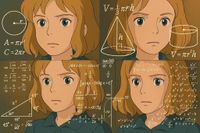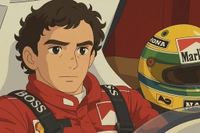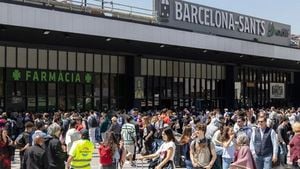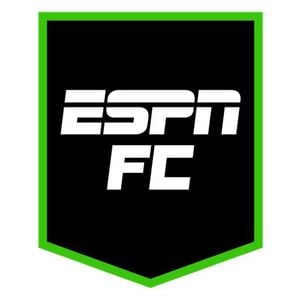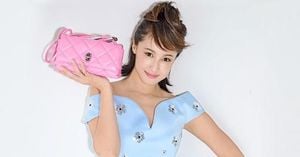A new trend has taken the internet by storm, with social media flooded by images inspired by the beloved Studio Ghibli, a renowned Japanese animation studio known for its enchanting films like Spirited Away and My Neighbor Totoro. This surge in Ghibli-style artwork coincides with a recent update to OpenAI's ChatGPT, which now includes an advanced image generation feature that allows users to create illustrations directly within the chatbot conversation.
The update, launched on March 25, 2025, integrates the powerful GPT-4o model, enabling users to generate images with remarkable precision and clarity. This new functionality allows for the upload of media files or detailed descriptions, resulting in illustrations that reflect the magical aesthetic characteristic of Ghibli films. Users have quickly embraced this feature, crafting artistic recreations of memes, public figures, and even personal photographs in the enchanting style of Ghibli.
To create an image reminiscent of Studio Ghibli, users must subscribe to a paid ChatGPT plan—either Plus, Pro, or Team. The process is straightforward: users select the image option during their conversation with the chatbot and provide a specific prompt. For instance, one might say, "Create an image of a dog riding a bicycle in a flower-filled field in the style of Studio Ghibli." The more detailed the command, the closer the result aligns with the desired aesthetic.
OpenAI's new image generator, referred to as "Images in ChatGPT," has been noted for its ability to produce consistent results across various styles, including realism and other beloved animation styles like Pixar and cartoons. However, due to overwhelming demand, the feature is currently limited to subscribers of ChatGPT's paid plans. Sam Altman, CEO of OpenAI, acknowledged the strain on their servers, humorously stating, "Our GPUs are melting," in a post on X, formerly known as Twitter.
Despite the excitement surrounding this new tool, the rollout for free users has been postponed. Initially, OpenAI planned to allow free users to generate three images per day, but this phase has been temporarily shelved, with no new date announced for its launch.
In addition to the technical advancements, the cultural implications of using AI to generate art in the style of established creators have sparked significant debate. OpenAI has implemented filters to prevent the creation of sensitive content and prohibits the reproduction of works by living artists. However, styles associated with studios like Ghibli remain permissible, as they provide a broader base of visual inspiration. The generated images do not carry watermarks but include metadata indicating they were created by AI.
Interestingly, the trend has also caught the attention of notable figures in the tech industry. Elon Musk joined in by sharing an image created in the Ghibli style, captioned "Theme of the day," on March 26, 2025. This playful engagement from influential personalities highlights the widespread appeal of this new feature.
While many celebrate the creativity unleashed by this technology, others voice concerns. Hayao Miyazaki, co-founder of Studio Ghibli, has been vocal about his disdain for AI in animation. In a 2016 meeting where AI technology was demonstrated, he expressed his strong opposition, stating, "I'm completely disgusted. If you really want to do scary things, go ahead and do them. I would never want to incorporate this technology into my work. I feel strongly that this is an insult to life itself." His comments underscore a growing tension in the film industry regarding the role of AI in creative processes.
As the conversation around AI-generated art continues to evolve, industry professionals, including directors, actors, and writers, are grappling with the implications of these tools. The future of AI in animation and other creative fields remains uncertain, with discussions likely to persist for years to come.
This new development in AI-generated imagery reflects a significant moment in the intersection of technology and art. As more users explore the capabilities of ChatGPT's image generation, the lines between traditional artistry and AI-driven creativity blur, prompting both excitement and apprehension about the future of artistic expression.

